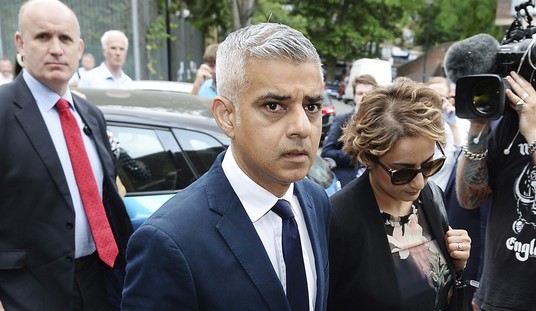As high school juniors across the country begin the college search process, there’s no doubt school ranking, academic programs, and cost are all important factors in the decision-making process. But students (and their parents who likely foot most of the bill) ought to be mindful of one other aspect when considering which college or university is the best fit for them: free speech on campus.
Since “nearly half of America’s top colleges maintain speech codes that blatantly violate First Amendment standards,” students would be wise to research which schools they may get suspended at for swearing, or have their classics professor fired for putting on an authentic production of Seneca’s “Medea,” or see their school newspaper’s funding revoked for simply publishing a column critical of the Black Lives Matter movement.
Fortunately, the Foundation for Individual Rights in Education has made the process of vetting schools simple by dividing more than 400 of the nation’s most prestigious colleges and universities into a red, yellow, and green light ranking system. Each year, the foundation also produces a ‘worst of the worst’ list of the top 10 colleges and universities with the most flagrant violations of faculty and student free speech.
Recommended
Behold this year’s list, fresh off the press:
Mount St. Mary’s University
Northwestern University
Louisiana State University
University of California, San Diego
Saint Mary’s University of Minnesota
University of Oklahoma
Marquette University
Colorado College
University of Tulsa
Wesleyan University
Among the institutions on FIRE’s annual “worst of the worst” list are a university that fired two faculty members for criticizing the university president’s plan to oust low-performing freshmen, a college that suspended a student for making a six-word joke on social media, and even one university that punished a student for something someone else said—and then went after the student newspaper for reporting on the story.
“This past year, free speech on campus took center stage and became international news,” FIRE President and CEO Greg Lukianoff said in a statement. “For those of us who have worked for years on the frontlines, the threat to free speech on campus isn’t a new story. Too often students find their voices silenced, and increasingly their professors are finding themselves in the same boat. If this year’s ‘worst’ list proves anything, it’s that even tenured faculty members aren’t safe from the censor’s muzzle.”
So what, specifically, qualifies a school to get placed on FIRE’s you-know-what list? Here’s one gem (emphasis mine):
Mount St. Mary's University in Maryland did everything it could this month to ensure it would find itself on this "worst of the worst" list in 2016. On February 8, the liberal arts university took the extraordinary step of firing Thane M. Naberhaus, a tenured professor, and Ed Egan, the student newspaper's faculty advisor, in the midst of a mushrooming scandal surrounding first-year university President Simon P. Newman's plan to oust low-performing freshmen.
The plan became national news in January after the student newspaper reported that Newman sought to use a student survey as a basis to identify students to dismiss, which would boost retention rates, and that he told a concerned faculty member, "This is hard for you because you think of the students as cuddly bunnies, but you can't. You just have to drown the bunnies ... put a Glock to their heads." The professors were notified of their firings in letters that stated they were "persona non grata" at the university and were no longer welcome on campus or at any university activity, and that failure to comply with the letter would result in "legal proceedings."
Newman also demanded and received the resignation of Provost David B. Rehm, who was previously critical of Newman's retention plan.
While Mount St. Mary's is a private, Catholic institution, it makes promises of free speech and academic freedom to its community that it is morally and legally obligated to uphold -- promises it broke in firing the faculty members.
The firings unleashed a storm of criticism, and on February 12, Newman announced at a faculty meeting that Egan and Naberhaus had been reinstated. Although Newman's reversal is a welcome development, Mount St. Mary's actions have caused lasting damage to the community's confidence in the administration. Naberhaus, in fact, has already stated that he refuses to return. If disagreeing with the administration on an important issue within the university community is a fireable offense, no form of dissent is safe at the Mount.
If you want an in-depth look at what the rest of the colleges and universities on the list did to become 2016’s worst offenders, Lukianoff gives detailed descriptions here.
Happy college hunting!


